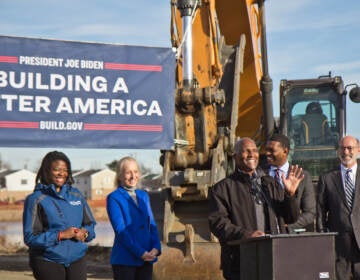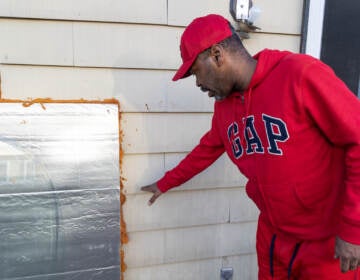After decades of pressure, Eastwick celebrates major milestone in Clearview Landfill cleanup
The EPA says the landfill cap will protect nearby residents from toxins. The cleanup was sped up with funds from the Bipartisan Infrastructure Law.
Listen 1:20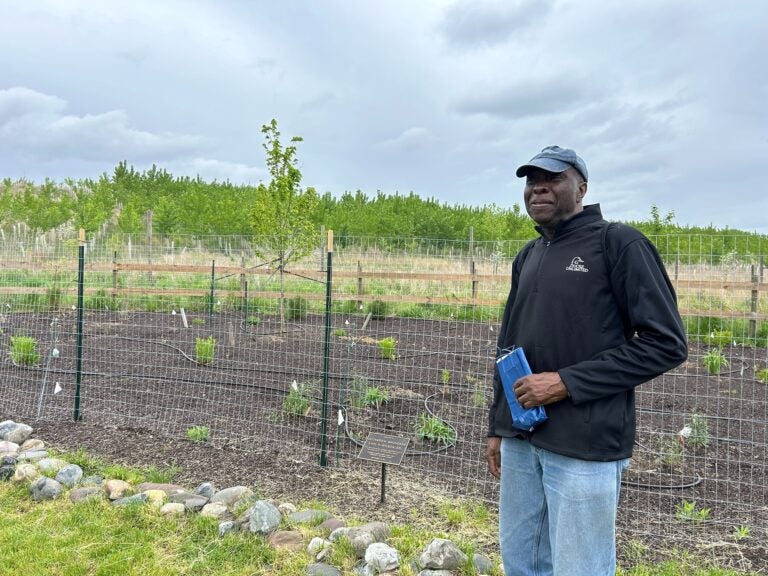
Eastwick resident Earl Wilson stands near a plaque honoring his and the late Leo Brundage's work to get the toxic Clearview Landfill cleaned up. (Sophia Schmidt/WHYY)
Have a question about Philly’s neighborhoods or the systems that shape them? PlanPhilly reporters want to hear from you! Ask us a question or send us a story idea you think we should cover.
The cleanup of a toxic landfill near homes and a recreation center in Philadelphia’s Eastwick neighborhood has hit a major milestone.
The EPA completed the cap on the Clearview Landfill late last year and celebrated with residents at an event Saturday.
“Finally we feel like they are listening to us,” said Victor Jackson, a longtime resident of the neighborhood and vice chair of Eastwick United CDC.
The Clearview Landfill straddles the line between Philadelphia and Delaware County and was added to the EPA’s National Priorities List of contaminated sites in 2001. When operating, it accepted municipal, demolition and hospital waste. It contains PFAS, arsenic, pesticides and other toxic chemicals.
As part of an urban renewal project, homes were built on contaminated soil from the landfill. During the cleanup, the EPA tested soil in yards and dug contaminated dirt out of around 200 residential properties and a park.
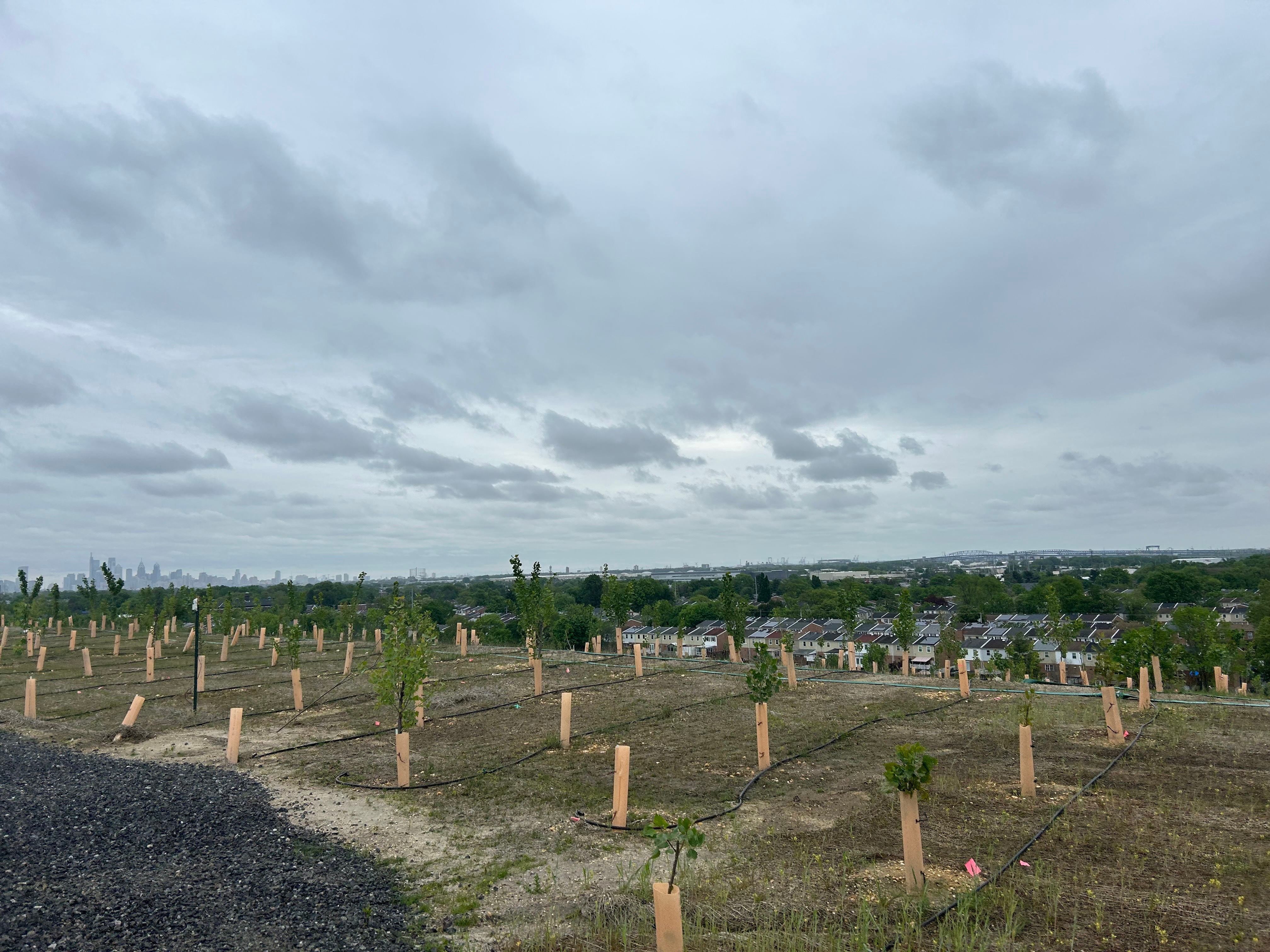
The EPA’s contractors compacted this contaminated soil onto the landfill, then capped it with a roughly 4-foot layer of clean clay, sand and topsoil and planted thousands of baby trees and shrubs all over the landfill.
“It’s all meant to act like a big sponge,” said EPA superfund remedial project manager Josh Barber.
The landfill is located near the place where two creeks meet and nearby homes experience frequent flooding. The landfill cap, known as an evapotranspiration cover, will protect people and wildlife from exposure to the buried toxins — even during flood events, Barber said.
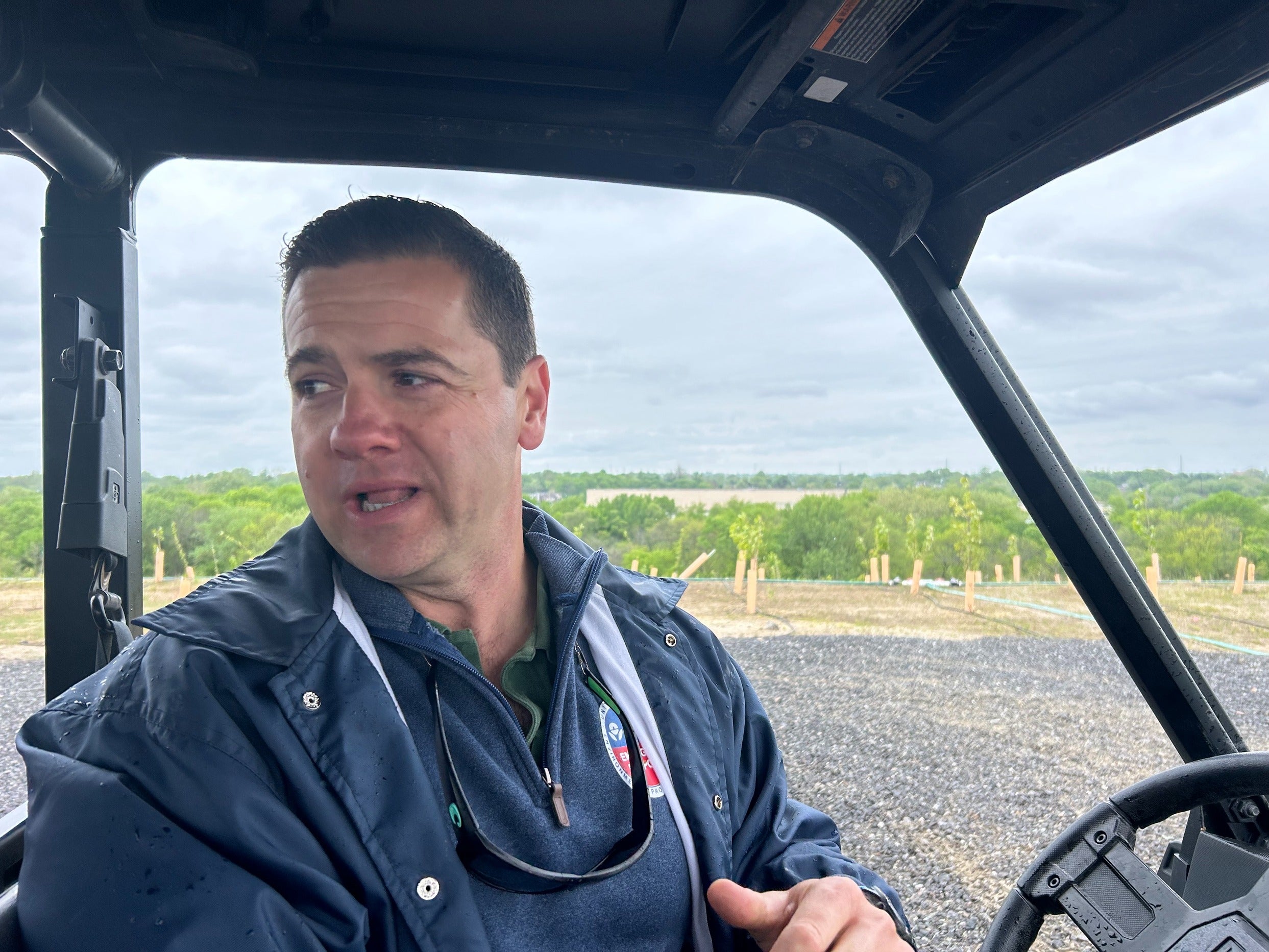
The EPA now considers the landfill safe for light recreation, like walking or hiking.
Decades of advocacy by neighbors
The progress is thanks to unrelenting advocacy from residents and the relationship they built with the federal agency, said Ted Pickett, board chair of the neighborhood organization Eastwick United.
“Residents endured long hours of weekly and monthly meetings over several years,” Pickett said Saturday. “We kept asking EPA difficult questions about how the cleanup would work and meet our needs.”
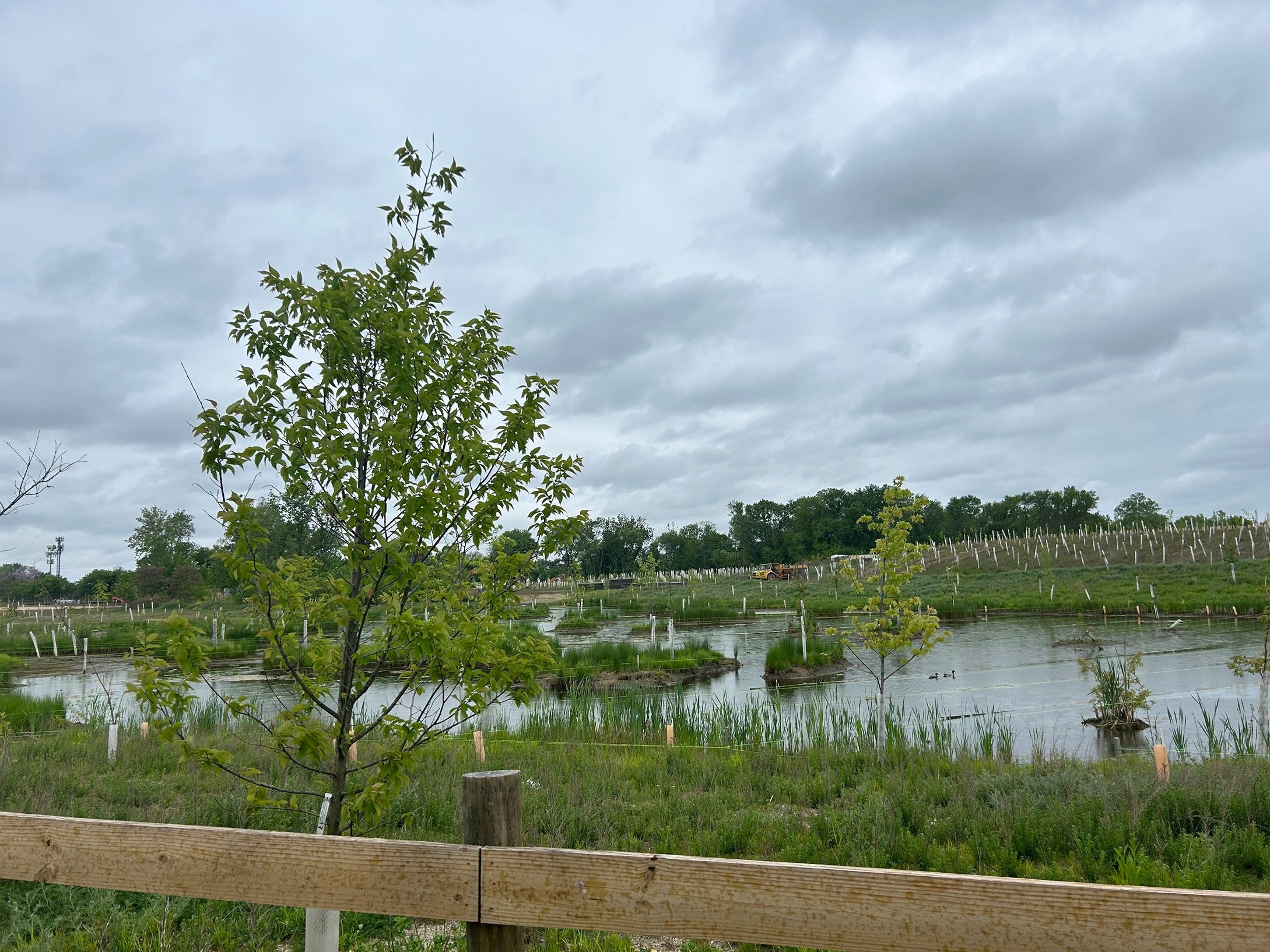
A Community Advisory Group formed to guide the EPA cleanup was just the latest iteration of the neighbors’ activism. Coverage in the Philadelphia Inquirer mentioned residents forming a human chain to stop trucks from dumping at the landfill in 1958 and an “army of protesting residents” by the early 1970s. The city and the developer that built the homes settled a 1985 lawsuit with residents that alleged prospective homebuyers were not told the large grassy hill nearby was actually the edge of a dump.
Earl Wilson, who leads the Eastwick Friends & Neighbors Coalition and moved into the neighborhood in 1978, remembers residents pressuring elected officials at the local, state and federal levels to deal with the landfill.
“We were still yelling to the choir in a sense, trying to get people to pay attention to what’s going on in Eastwick,” he said.
Eventually, things “began to gel,” he said, with governmental officials working together with residents to move the cleanup forward.
“I wish my buddy Leo was here,” Wilson said Saturday, referring to Leo Brundage, who lived close to the landfill and long fought for its cleanup, as well as for a solution to the frequent flooding that plagues the neighborhood. Brundage passed away last spring.
The landfill cap was finished in late 2023 — about a year ahead of schedule, thanks to good weather and an infusion of cash from the Bipartisan Infrastructure Law, Barber said.

Elected officials and EPA Administrator Michael Regan held a press conference at the landfill in 2021 to announce billions of dollars for superfund cleanups nationwide from the legislation.
The superfund site in Philly and Delaware County, called the Lower Darby Creek Area Site, includes not just the above-ground portion of the Clearview Landfill, but the groundwater beneath it. It also includes the nearby Folcroft Landfill and the aquatic environments within the Cobbs and Darby creeks and John Heinz National Wildlife Refuge.
Still to go: contaminated groundwater and toxic fish
The EPA still needs to contain contaminated groundwater under the site, determine a cleanup strategy alongside potentially responsible parties at the nearby Folcroft Landfill and address elevated levels of toxins in sediment and fish in the nearby waterways.
“The last big issue we have to deal with is the fish tissue contamination… working with local organizations and individuals to help stop people from catching and eating the fish in this area,” Barber said.
Wilson hopes the Clearview Landfill will eventually be open to the public, with walking and biking trails.
“I can envision trails, other community amenities,” Wilson said. “Hopefully it’ll be an area where people will be able to enjoy the greenery… and it will become a viable park.”
The EPA would like to see that too, Barber said. But for now, access is restricted because the landfill is privately owned by an LLC.

Get daily updates from WHYY News!
WHYY is your source for fact-based, in-depth journalism and information. As a nonprofit organization, we rely on financial support from readers like you. Please give today.





